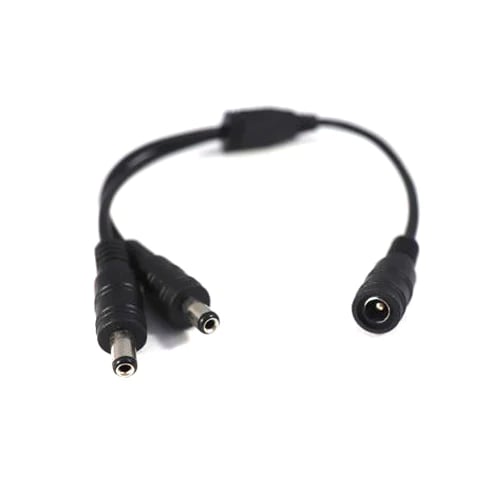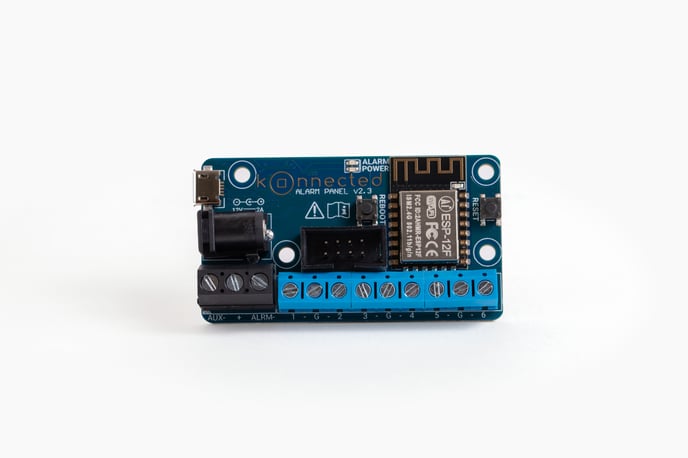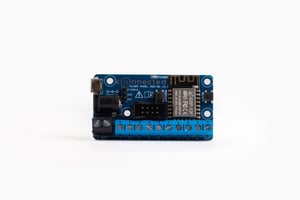Understanding the Difference between Alarm Panels and Add-On Boards
When it comes to purchasing alarm panel boards, it's important to understand the options available and why some individuals opt for boards only without the power adapter. In this article, we will explore the reasons behind this choice and shed light on the technical and practical aspects customers should consider. Whether you're a tech enthusiast or an average user, this article aims to understand alarm panel boards and their functionality comprehensively.
Various Ways to Power Alarm Panel Boards
When purchasing alarm panel boards without a power adapter, you might wonder how to power them up. There are several options available, depending on your specific situation:
Power Splitters:  If you add additional boards to your existing Konnected setup, you can utilize a power splitter. Connecting the splitter to your existing power adapter allows you to draw power for the new boards without requiring an additional adapter. This can be a convenient and cost-effective solution.
If you add additional boards to your existing Konnected setup, you can utilize a power splitter. Connecting the splitter to your existing power adapter allows you to draw power for the new boards without requiring an additional adapter. This can be a convenient and cost-effective solution.
Existing Power Supplies: Some users might already have compatible power supplies available in their wiring enclosures or from previous installations. They can repurpose these power supplies to provide the necessary power to the alarm panel boards, eliminating the need for an additional adapter.
Reusing Old Power Adapters: Reusing a 12V power adapter from a different gadget is a viable option for budget-conscious individuals. As long as the power adapter provides the required voltage and meets the specifications, it can power the alarm panel boards.
Interface Installations: Power can be drawn from an old or traditional alarm panel in certain scenarios. Although not recommended by default, it is possible to connect the alarm panel boards to the power source of the existing panel. I want to point out that this approach requires careful consideration and should be done with caution.
Functionalities and Use Cases
The distinction between alarm panel boards and add-on boards lies in their output capabilities and specific use cases:
Alarm Panel Board:

The alarm panel board has a 12V switched output. This output allows for connecting devices that require 12V power, such as sirens, strobe lights, 12V LED lights, electronic door strikes, and 12V relays. The alarm panel board is recommended if you intend to connect any of these devices to the alarm system.

In contrast, the add-on board features a 3.3V trigger instead of a 12V switched output. This configuration is suitable for connecting devices that operate within the 3-5V range. Examples of compatible devices include 5V relays, temperature or humidity sensors, and water droplet sensors. If your intention is to connect any of these devices to expand the functionality of your Konnected system, the add-on board is the preferred option.
Expanding the Alarm System Ecosystem
For customers looking to expand the input capabilities of their Konnected system, both the alarm panel board and add-on board can serve the purpose. If you want to add more input zones, such as doors, windows, or motion sensors, the choice between the two boards becomes less significant. Both boards offer up to six inputs, making them suitable for expanding the coverage of your alarm system.
In conclusion, when considering a purchase, please understand the nuances of alarm panel boards, including power options and functionalities. Customers can make informed decisions that align with their specific needs by exploring different power options and grasping the differences between alarm panel boards and add-on boards. Whether you're upgrading an existing system, expanding the ecosystem, or simply exploring new possibilities, this knowledge will empower you to make the right choice.